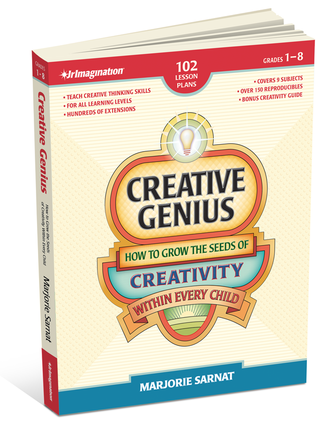Creative Connections
 Wednesday, September 21, 2011 at 8:50AM |
Wednesday, September 21, 2011 at 8:50AM |  Marjorie Sarnat
Marjorie Sarnat 
Creative thinkers play with metaphors and analogies. This means that they look at one thing as if it were another thing. They ask, “What else could this be like?” They make new connections between unrelated things.
 Seurat,
Seurat,  analogies,
analogies,  children,
children,  connections,
connections,  creative playground,
creative playground,  creativity,
creativity,  games,
games,  kids,
kids,  metaphors,
metaphors,  students
students 




